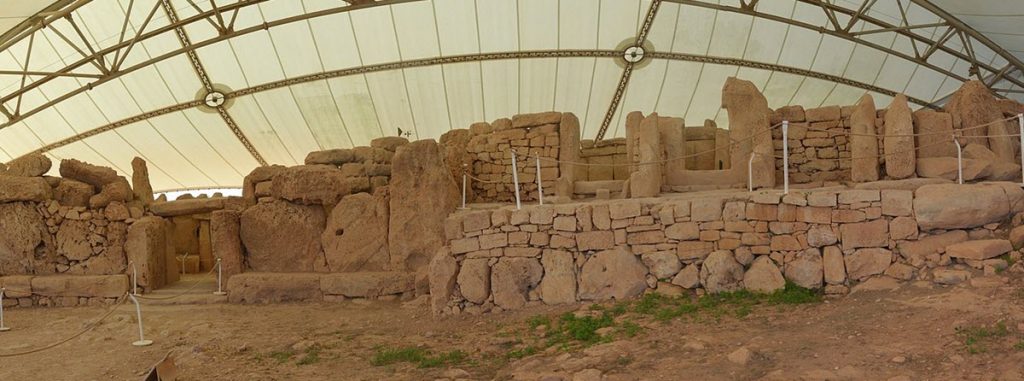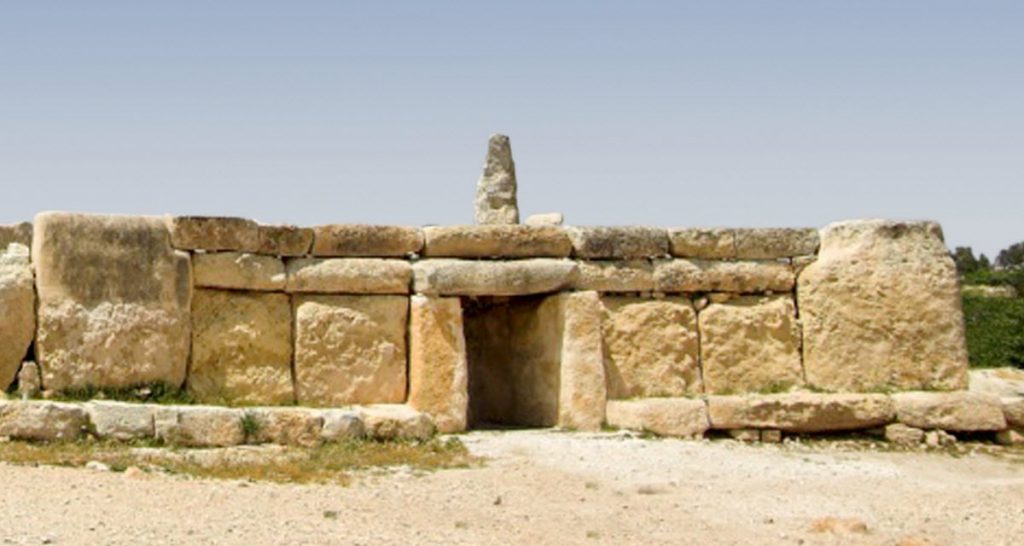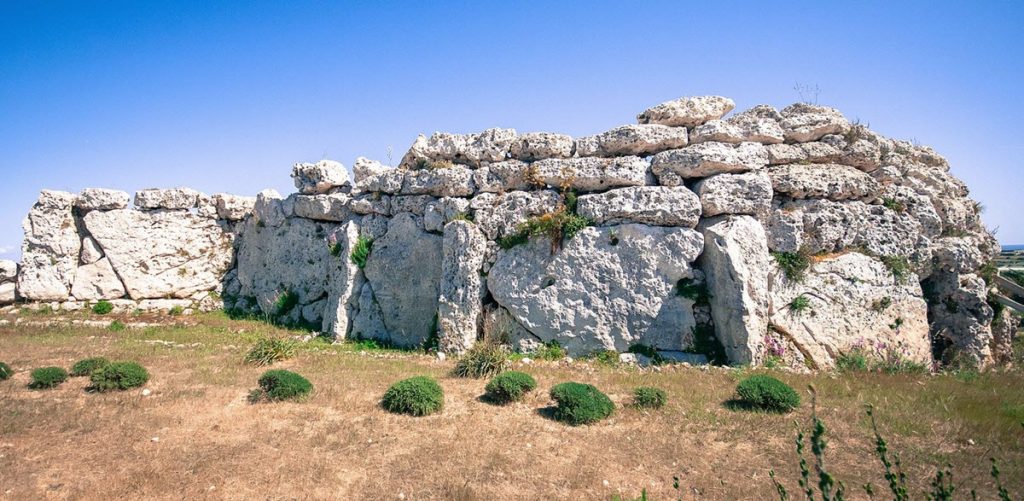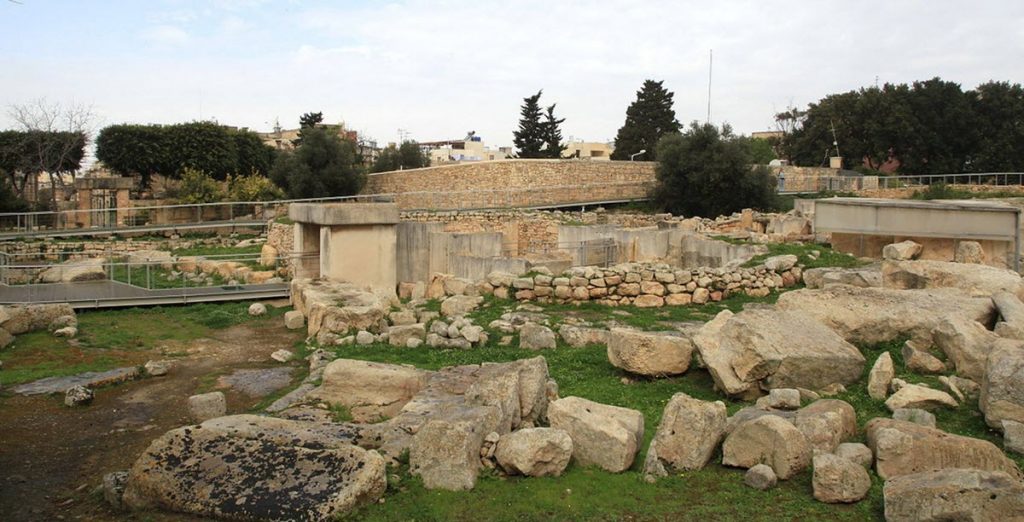Malta, a small island nation located in the Mediterranean Sea, has been inhabited for thousands of years. The earliest known inhabitants of Malta arrived around 5000 BCE. These people were likely from nearby Sicily, and they brought with them agriculture and rudimentary stone construction techniques.
Ever since, Malta has been influenced by a wide range of civilizations, due to its strategic position between Europe and North Africa. Many different peoples have left their mark on the island and had an effect on Maltese culture, architecture, and society.
Malta’s history is a testament to its strategic importance. From prehistoric times to the modern-day, the island has been a crossroads for various cultures and civilizations, each contributing to its unique heritage. Despite its small size, Malta has played a significant role in the geopolitical and cultural developments of Europe and the Mediterranean region.
Prehistoric Malta (5000 BCE – 700 BCE)
As mentioned above, the earliest known inhabitants of Malta arrived around 5900 BCE, and they probably came from nearby Sicily. They brought with them agriculture and rudimentary stone construction techniques, and pottery found by archaeologists at the Skobora Temples on Malta resembles pottery found in Italy. The early farmers on Malta grew cereals, raised livestock and worshipped a fertility deity.
There used to be dwarf hippos, giant swans and dwarf elephants living on Malta, but they went extinct and this extinction has been linked to the earliest arrived of humans on the island.
Malta is home to some of the oldest megalithic temples in the world, such as Ġgantija on the island of Gozo, dating back to around 3600 BCE, which predate even the Pyramids of Egypt. These temples are evidence of a sophisticated prehistoric culture that built large stone structures, believed to have been used for religious purposes.






Phoenician and Carthaginian Rule (700 BCE – 218 BCE)
Around 700 BCE, the Phoenicians, a seafaring people from the Levant, colonized Malta due to its strategic position for trade routes. The Phoenicians established the island´s first fortified city; Maleth (modern-day Mdina).
Eventually, Malta fell under the control of Carthage, a Phoenician colony in North Africa. This period lasted from around 480 BCE until the Roman conquest in 218 BCE.
Roman Rule (218 BCE – 395 CE)
Malta became part of the Roman Republic following the defeat of Carthage during the Second Punic War in 218 BCE. Under Roman rule, Malta was known as Melite, and the islands flourished.
St. Paul, one of the most significant figures in early Christianity, was shipwrecked on Malta around 60 CE during his journey to Rome. According to tradition, St. Paul’s presence introduced Christianity to the Maltese people, and the event is commemorated at the site of St. Paul’s Grotto in Rabat.
Eventually, the Roman Empire was divided into Western Rome and Easter Rome (the Byzantine). Malta became part of the Byzantine Empire in 395 CE.
Arab Rule (9th century CE – 1091 CE)
During the 9th century, Malta was conquered by Arab forces from North Africa. The Arab influence on Malta was profound, introducing new agricultural techniques, architecture, and the Arabic language, which has left a lasting impact on the Maltese language—a Semitic language with significant Romance language influences.
The Normans and the Order of St. John (1091 – 1798)
In 1091, the Normans, under Roger I of Sicily, captured Malta from the Arabs. This marked the beginning of Malta’s reintegration into the European Christian world. Over the next few centuries, Malta was ruled by various European powers, including the Hohenstaufens, Angevins, and the Aragonese.
In 1224, a mass expulsion of Arabs occurred, and the entire Christian male population of Celano on the Italian penninsula were deported to Malta that same year to replace them. 25 years later, the Holy Roman Emperor decreed that all remaining Muslims on Malta should convert or be expelled.
One of the now most famous periods in Maltese history began in 1530, when Charles V of Spain granted the Knights of the Order of St. John (also known as the Knights Hospitaller) a perpetual lease on Malta. As payment for the lease, the Knights brought the Spanish crown an annual tribute of one Maltese Falcon.
A previous base for the Knights Hospitaller had been the island of Rhodes, but they had been driven away from that island by the Ottoman Empire in 1522. On Malta, the Knights made sure to fortify their new island. They built the impressive city of Valletta after the Great Siege of Malta in 1565, and made it a stronghold of Christian Europe against the Ottoman Empire. Under their rule, Malta flourished culturally and economically.
Many architectural and cultural projects were carried out during the Knights rule of Malta, and several new cities were established, including Città Rohan (modern Ħaż-Żebbuġ). The Knights also built watchtowers along the coast and named them after the Grand Masters who ordered the work – Wignacourt, Lascaris and De Redin.
By the 1700s, the power of the Knights Hospitaller had declined and they were no longer as popular as before.
The French Occupation (1798 – 1800)
In 1798, Napoleon Bonaparte seized Malta on his way to Egypt, marking the beginning of French control. However, French rule was short-lived. The Maltese rebelled, and with assistance from the British Royal Navy, the French were expelled by 1800 as the French General Claude-Henri Belgrand de Vaubois surrendered.
After the French defeat, the Maltese leaders presented the main island to Sir Alexander Ball and asked for the island to become a British Dominion. The Maltese people created a Declaration of Rights in which they agreed to be under the protection and sovereignty of British King, but which also stated that the King had no right to cede the islands to any power, and that if he elected to withdraw his protection, the people of Malta had the right to elect another sovereign.
British Rule (1800 – 1964)
British rule lasted for over 150 years and Malta became an important British naval base, especially during World War II, when the island was heavily bombed by Axis forces but remained a vital stronghold for the Allies. Malta’s resilience during the war earned the entire population the George Cross from King George VI in 1942 for their bravery, and this symbol is still part of the Maltese flag today.
Independence and Modern Malta (1964 – Present)
Malta gained independence from Britain on September 21, 1964, and became a republic in 1974. Dom Mintoff, one of Malta’s prominent political figures, played a central role in transitioning Malta into a republic. Until 1974, Queen Elizabeth II was still head of state, and had a governor-general exercising her authority in Malta.
Malta declared itself a republic on 13 December 1974 but stayed within the Commonwealth. A defence agreement with Britain was in place until 1979, and when it expired the British military base on Malta closed and land that had been controlled by the British until then was handed over the Maltese government.
Malta adopted a policy of neutrality in 1980, and in 1989 Malta hosted a summit between the United States President George H.W. Bush and the Soviet leader Mikhail Gorbachev; a meeting that was largely seen as the end of the Cold War.
After a referendum held in 2003, Malta joined the European Union on 1 May 2004. On January 2008, the country adopted the euro as its official currency, further solidifying its place in the modern European landscape. Today, Malta is known for its booming tourism sector, vibrant cultural heritage, and position as a financial hub within the EU.
